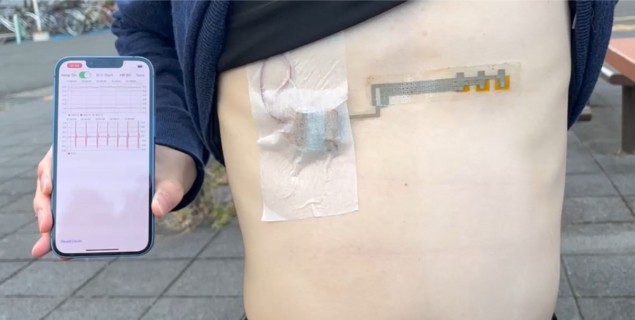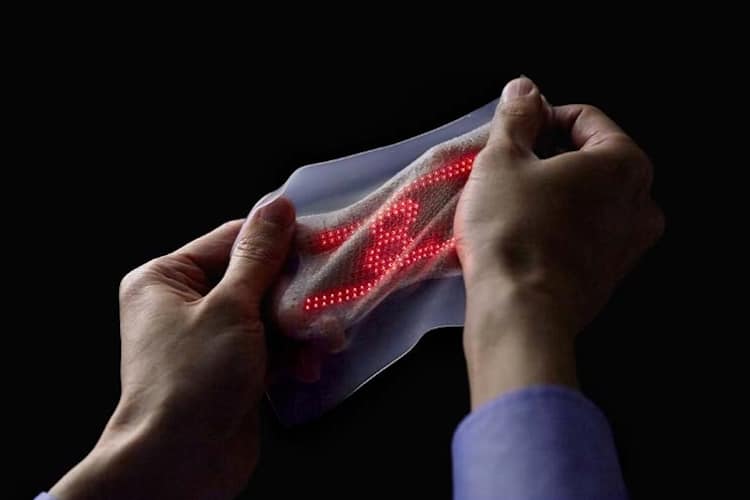Kirigami-inspired electrocardiogram sensors can be worn all day
08 Apr 2022

The Japanese art form of kirigami has inspired a new heart sensor that can monitor electrical signals from the surface of the skin while being worn for long periods of time. Borrowing from the principles of kirigami, Kuniharu Takei and colleagues at Osaka Prefecture University cut a pattern of holes in an electrode-coated PET film, which allowed the material to conform to the skin’s surface more easily.
The latest advances in wearable technology include devices that can monitor aspects of a wearer’s health in real time. In the future, wearable technologies could identify diseases in their early stages or even predict the likelihood of future medical conditions.
Electrocardiography (ECG) is an important technique for monitoring the health of the heart. The heartbeat causes subtle electrical changes to the skin’s surface, and these changes are captured by placing pairs of electrodes on specific parts of the body. Information provided by an EKG can be used to diagnose heart conditions such as arrhythmias.
Comfort and stability
Most ECG monitoring is done in a matter of minutes, with most of the time devoted to placing and removing the electrodes. However, being able to monitor the heart continuously could benefit some people. An important challenge of doing continuous monitoring is creating electrodes that can remain on the skin for long periods of time without causing discomfort to the wearer. Such devices must be able to conform to the intricate and changing contours of the body, while remaining comfortable and stable, even during exercise.
Previous attempts at developing electrodes have focussed on making electrodes as thin and flexible as possible. So far, however, there has been less focus on making sensors smaller and more breathable. Reducing sensor size is a particular challenge because smaller devices tend to have higher levels of noise.
To address size and breathability, Takei’s team turned to kirigami, an art form whereby paper is cut before being folded to create 3D objects. To create their sensor, they first printed sheets of silver electrode on both sides of a plastic (PET) film. A second film of PET is then deposited on one of the silver sides. The remaining silver side of the device contacts the skin, while the PET protects the device.
Millimetre-sized holes
A laser was then used to cut a kirigami pattern of millimetre-sized holes and slits into this multi-layered structure. This allowed the relatively stiff PET material to stretch and bend far more easily, while also allowing the wearer’s sweat to readily pass through. To perform ECG’s, the electrodes were connected to a battery-powered sensor, which uses Bluetooth to transmit detected signals to an app on the wearer’s smartphone.READ MORE

Takei and colleagues found that an optimal balance between comfort and noise could be reached through an electrode size of roughly 200 mm2 with the sensors placed 1.5 cm apart. This resulted in accurate, reliable heart data when the device was tested on people carrying out a range of everyday activities, including sitting and walking.
Through further improvements, the researchers now hope to integrate more sensors into their system. This could allow it collect multiple types of data from the skin surface and approve its ability to help doctors make non-invasive diagnoses.
The research is described in Applied Physics Reviews.
Sam Jarman is a science writer based in the UK.
from physicsworld.com 24/4/2022
Δεν υπάρχουν σχόλια:
Δημοσίευση σχολίου